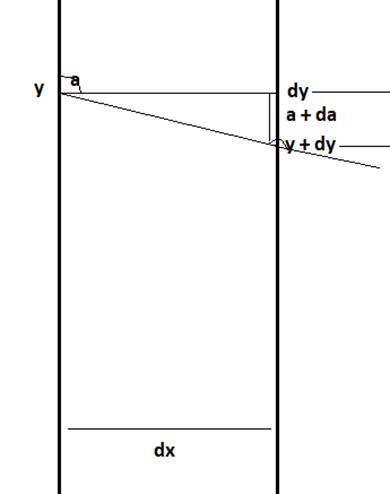The mixture a pure liquid and a solution in a long vertical column (i.e., horizontal dimensions << vertical dimensions) produces diffusion of solute particles and hence a refractive index gradient along the vertical dimension. A ray of light entering the column at right angles to the vertical is deviated from its original path. Find the deviation in travelling a horizontal distance d << h, the height of the column.
The angle of deviation is ![]()
Given:
The vertical height of the column is much larger than the horizontal height. The width of the column = d, and the height of the column = h. using the relationship between the incidence and refraction with refractive index of the liquid to find the height of the column.
Formula Used:
Snell’s Law, is the ratio between the sine value of incidence and refraction with the ratio of refractive index of the mediums through which the light passes.
![]()
where
![]() is the refractive index of the medium,
is the refractive index of the medium, ![]() is the refractive index of the air
is the refractive index of the air![]() . i is the angle of incidence and r is the angle of refraction.
. i is the angle of incidence and r is the angle of refraction.
Explanation:

When the ray of light passes from x to dx inside the liquid, the angle of incidence of light at x is a, which passes through the tube at a height of y and is released at an angle of refraction at a + da, at a height of y + dy. Using snell’s law we get:
![]()
![]()
![]()

![]()
Putting ![]()
![]()
![]()
Integrating both sides with second side from ![]()

![]()
![]()
![]()
Therefore, the deviation in travelling a horizontal distance d << h, is![]() .
.